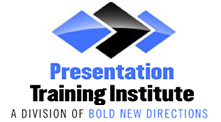1. Not Preparing Enough
As with any other skill, it takes practice and preparation to become a good public speaker. If you fail to prepare, you can prepare to fail. Not preparing enough is the single biggest mistake of any amateur public speaker. Preparation involves learning as much as possible about your topic and your audience. Figure out what knowledge your audience has and what they really want to learn about your topic. This allows you to tailor your speech to meet their needs. Preparation also involves practice, and plenty of it. Adequate preparation can help ease your anxiety about speaking in front of an audience. Rehearse in front of a mirror until you know your material backward and forward.Â
2. Reading from Slides
Visual aids, such as a PowerPoint, can be useful in helping the audience better understand the material. However, this is called an ‘aid’ for a reason. It is not meant to replace the words of the speaker, but rather ‘aid’ them in sharing information. Reading straight from your slides not only bores the audience to death, but it gives the impression that you don’t know much about your topic. For this reason, avoid reading slides and focus on engaging the audience.
3. Using Filler Words
Filler words such as ums and uhs can immediately kill your presentation. These words not only make you immediately look like a novice, but they also make you appear unprofessional and unprepared. Furthermore, you will lose credibility with your audience. The best remedy for this problem is to practice and rehearse several times in front of a mirror or mock audience and pay attention to your use of these words. Try slowing down and gathering your thoughts when you feel the urge to use a filler word.Â
4. Talking Too Fast
Most people get nervous when they speak in front of an audience and this leads us to the next speaking mistake: talking too fast. Much like speakers who use filler words, speaking too fast makes you appear nervous and unprepared. One way to keep yourself from rushing through your presentation is to practice it over and over. Take deep breaths as needed and focus on speaking at a slower speed.
5. Using Distracting Mannerisms
When you speak to your audience, you want them to be focused on what you are saying, not what you are doing. Unfortunately, many speakers distract their audience with mannerisms like pacing back and forth, clenching their hands, gripping the podium, or adjusting their hair. If you do these things on stage, your audience will have a hard time concentrating on your message.Â
6. Not Making Eye Contact
Many people get nervous when they are speaking and therefore avoid eye contact at all times. However, eye contact is essential to an effective presentation. If you don’t take the time to look your audience in the eye, you miss the opportunity to connect with them. As you speak, make it a point to focus on one person for a few seconds at a time before moving on to the next. This will help you to engage the audience.Â
7. Going Over Your Allotted Time
If you are given 20 minutes to speak, stick to 20 minutes. If your keynote address is supposed to be 45 minutes, don’t exceed your time limit. The longer you speak, the harder it is to keep your audience engaged. Also, remember that your audience’s time is valuable so be respectful of that by not going over your allotted time.
